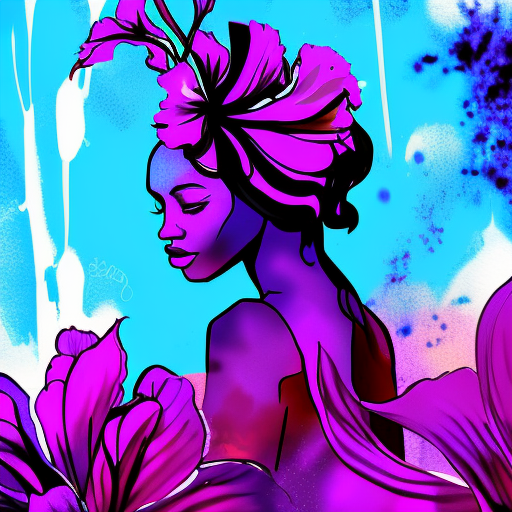One-line Summary:
Purple Hibiscus is a powerful coming-of-age story set in Nigeria, exploring themes of family, religion, and the struggle for personal freedom.
The Story:
Purple Hibiscus, written by Chimamanda Ngozi Adichie, is a captivating novel that takes place in post-colonial Nigeria. The story is narrated by Kambili, a 15-year-old girl from a wealthy and devoutly Catholic family. Kambili’s father, Eugene, is a respected businessman and devout Catholic who is highly regarded in the community. However, behind closed doors, Eugene is a tyrant who rules his family with an iron fist.
The novel begins with Kambili and her brother, Jaja, living under the strict control of their father. They are not allowed to question his authority or express their own opinions. Their lives are tightly regulated, and any deviation from their father’s expectations is met with severe punishment. Despite the abuse, Kambili and Jaja are devoted to their father and strive to meet his high standards.
Everything changes when Kambili and Jaja visit their Aunt Ifeoma and her children in Nsukka. In their aunt’s home, they experience a different way of life, one filled with laughter, freedom, and intellectual curiosity. Aunt Ifeoma is a strong and independent woman who encourages her children to think for themselves and question the status quo. Through their time with Aunt Ifeoma, Kambili and Jaja begin to question their father’s beliefs and the oppressive nature of their own household.
As the story unfolds, Kambili and Jaja’s relationship with their father becomes more strained, and they find themselves caught between their love for him and their desire for personal freedom. The political unrest in Nigeria further complicates their lives, as their father’s business is targeted by protesters. The family’s faith is also tested when a tragedy strikes, forcing them to confront their beliefs and redefine their understanding of love and forgiveness.
Themes:
Family:
One of the central themes in Purple Hibiscus is the exploration of family dynamics. The novel delves into the complexities of familial relationships, highlighting the impact of abuse, control, and the struggle for independence. Adichie portrays both the destructive and nurturing aspects of family bonds, emphasizing the importance of love, understanding, and acceptance.
Religion:
Religion plays a significant role in the lives of the characters, particularly through the lens of Catholicism. Adichie examines the influence of religious beliefs on individuals and communities, exploring the tension between faith and personal freedom. The novel raises questions about the role of religion in shaping one’s identity and the potential for both liberation and oppression within religious institutions.
Personal Freedom:
The quest for personal freedom is a recurring theme throughout the novel. Kambili and Jaja’s journey towards self-discovery and autonomy is contrasted with the constraints imposed by their father and society. Adichie highlights the importance of individual agency and the courage required to challenge oppressive systems in order to find one’s own voice and path in life.
Key Takeaways:
- Family dynamics can be complex, encompassing both love and abuse.
- Religion can be a source of both liberation and oppression.
- Personal freedom requires the courage to challenge oppressive systems.
“There are people, she once wrote, who think that we cannot rule ourselves because the few times we tried, we failed, as if all the others who rule themselves today got it right the first time. It is like telling a crawling baby who tries to walk, and then falls back on his buttocks, to stay there. As if the adults walking past him did not all crawl, once.” – Chimamanda Ngozi Adichie, Purple Hibiscus
Purple Hibiscus is a thought-provoking novel that explores the complexities of family, religion, and personal freedom. Through the eyes of Kambili, readers are taken on a journey of self-discovery and resilience. Adichie’s vivid storytelling and compelling characters make Purple Hibiscus a must-read, offering valuable insights into the human experience.












